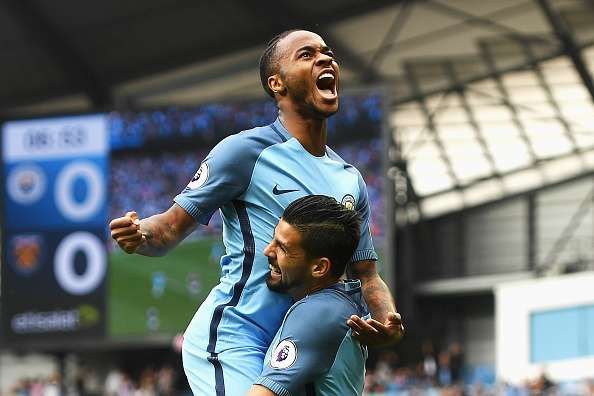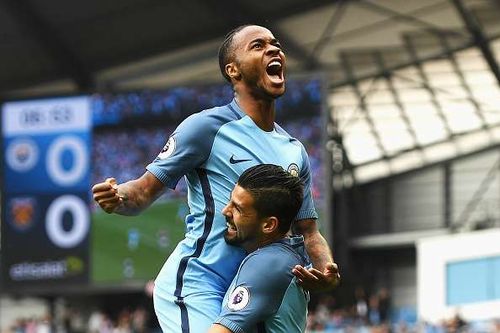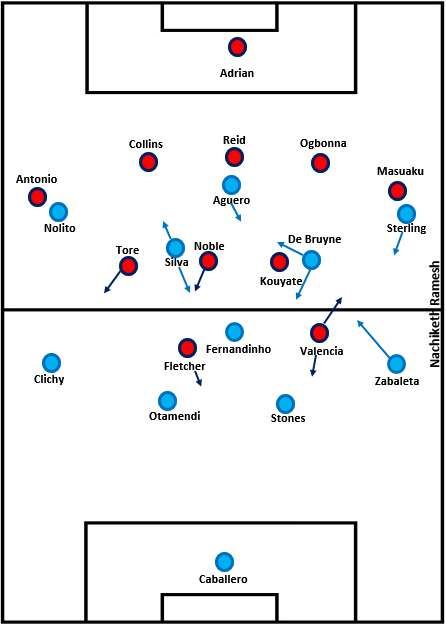
Pep Talk - 06: Tactical analysis of Manchester City vs West Ham United

Pep Guardiola faced a back three for the first time in England when his Manchester City team faced Slaven Bilic’s West Ham United. Thanks to a brace from Raheem Sterling and a Fernandinho goal, City cruised past the visiting team.
Teams:
Manchester City: Willy Caballero, Gael Clichy, Nicholas Otamendi, John Stones, Pablo Zabaleta; Fernandinho, David Silva, Kevin de Bruyne; Nolito, Sergio Aguero, Raheem Sterling.
West Ham United: Adrian, Angelo Ogbonna, Winston Reid, James Collins; Arthur Masuaku, Cheikhou Kouyate, Mark Noble, Gokhan Tore, Michail Antonio; Enner Valencia, Ashley Fletcher.
Guardiola, having used 4-1-4-1 in all the previous games this season, changed the line up slightly as Silva and De Bruyne played more central and narrow to make the shape seem like a 4-3-3. One of the very surprising aspects of Bilic’s West Ham was the usage a back three against Manchester City’s lone forward. West Ham started with a 3-5-2 formation.
Manchester City’s slightly altered look – West Ham back three challenge
To combat a packed opposition in the midfield and the prospect of facing a three-man defense, Guardiola played his two playmakers – Silva and De Bruyne – a bit deeper than their usual position in the earlier matches. In the previous games, where City played a 4-1-4-1 and both these players played more like #10s, against West Ham they were deeper and narrower and seemed like #8s.
With the aim of cancelling West Ham’s numerical upper hand in the midfield, which the visiting side could’ve achieved by staggering the shape, Guardiola intended to have Silva and de Bruyne involved in the build-ups closer to the center circle.
Also by dropping deeper, Silva and De Bruyne were towing the midfield and defensive line of the visiting team and were creating space for the wide players, the striker and one of the #8s to move into. The first goal was created in a similar situation in which the Belgian midfielder ran through the space between the lines.
Silva and De Bruyne were alternating between the center and half-spaces, supporting the center backs in making forward passes towards them while maintaining a central position and allowing diagonal inward passes from the wingbacks while moving to the half-spaces.
Also, the #8 far from the ball for City was a bit ball-oriented. This maybe because of two reasons. One, to support Aguero in laying off vertical balls. Two, to overload the ball near side.
Fernandinho, too, played more at the base of the midfield trio and rarely dropped deep. While pressing the central defenders of City, West Ham usually had two forwards.
To create a passing option behind the first line of press and also to draw out the two forwards wider so as to gain central penetration, Fernandinho was not dropping between the central defenders.
A back three line up of West Ham, against one forward felt like a silly decision from Bilic. By stepping up close towards Aguero, Silva and De Bruyne, they were able to cut short the passing options of the defenders of the visiting team.
While defending, with space in front of them, Ogbonna and Collins – the central defenders on either side of Reid, were being forced to move higher up to press the City players positioned in this space. This allowed room behind the defensive line for Aguero to run into.
If Reid and Co. decided to stay flat, Aguero was being presented with the opportunity of drifting from side to side and receive passes and support the ball carrier. Big space between the lines enabled the Argentine forward to drop deep to collect vertical passes and then lay them off to launch quick attacks on West Ham.

